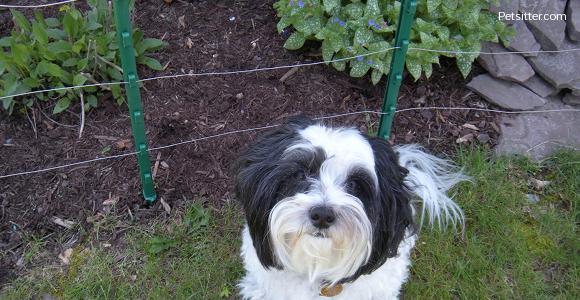
Is Your Garden Pet Safe?
Our gardens and yards provide us a relaxing atmosphere from the hectic world that we live in.
However, thousands of animals each year are affected by various chemicals present in insecticides, weed killers and pet toxic plants .
So what are the various substances that we have to stay away from when going out gardening? The following is listed below:
1) Insecticides
Most people use these to keep their gardens healthy, however, how knowledgeable are we of the chemicals present in them? Most of us can’t even pronounce the chemicals in the label, let alone know their uses and effects. Although not all the chemicals present are harmful for our four legged friends, there are some in particular that you should stay away from. These include metaldehyde, fly bait with methomyl, systemic insecticides with the ingredients disyston or disulfoton, mole or gopher bait with zinc phosphide and most forms of rat poisons.
2) Fertilizers
If you want your plants to grow well, over a long growing season they need fertilizers. But besides their benefits fertilizers can be harmful as well, for they have been known to affect the digestive tracts of animals, especially domestic pets. This can result in life threatening gastrointestinal obstruction. Therefore when using fertilizers, carefully follow instructions as manufacturers usually have suggested waiting periods before letting your pet outside.
3) Poisonous Plants
Before you head down to your local garden center and pick out the prettiest plants you can for your garden, beware that behind their beauty can be a poisonous threat for your pet. Popular plants such as sago palm, rhododendron and azalea—are toxic to cats and dogs, therefore not a good choice for pet owners. Sago pal and other members of the Cycad family as well as mushrooms can cause liver failure, while rhododendron, azalea, lily of the valley, oleander, rosebay, foxglove and kalanchoe all can affect the heart.
2) Cocoa Mulch
Cocoa mulch or cocoa bean shells ( a byproduct of chocolate production) is used by many landscaping companies and professional gardeners for its attractive color and odor. It’s sweet chocolate smell attracts dogs instantly, a little like a trap. Depending on the amount, ingestion of cocoa mulch can cause a range of clinical signs, from vomiting, diarrhea and muscle tremors to elevated heart rate, hyperactivity and even seizures. Consider using a non-toxic alternative, such as shredded pine, cedar or hemlock bark.
4) Compost
Being green is an ever popular trend and will continue to trend in the future. Composting is just one of the current practices of many. Food and garden waste make for excellent additions to garden soil but not everything that is compostable is safe for your beloved pets. Coffee, mouldy food and certain types of fruit (grapes) and vegetables(avocado) are extremely dangerous for them.
5) Garden Tools
Unattended garden tools are not only hazardous in homes with young children, they are also hazardous for dogs and cats. Tools such as rakes, hoes and trowels can injure the toes of your pets and other parts of their body. In addition, if they contain rust and/or dirt, this means an immediate trip to the vet for a tetanus shot. Therefore, it is a necessity for gardening tools to be properly and safely stored
The garden is a delightful place for pets to frolic. Make sure they are safe... it is your responsibility!